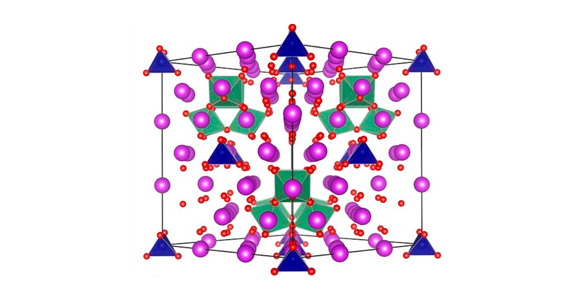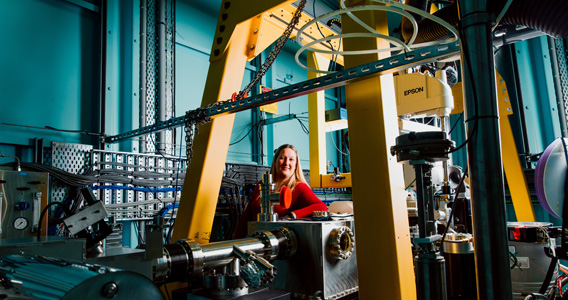In 2009, the following Australian Synchrotron articles appeared in Australasian Science magazine.
The New Australian Gold Rush
High-tech science is helping researchers chase big potential pay-offs in the latest Australian gold rush.
For thousands of years, gold has held a special place in our hearts - and our economies. In Australia, gold was officially discovered in NSW in 1851 and later in the other states.
Now there's a 21st century Australian gold rush. From gold nanoparticles so small that 5000 of them could fit across the width of a single human hair to large-scale mineral processing and exploration technologies, there's money to be made from new gold discoveries.
Click here to download the full text (pdf, 95kb) of this article from January/February 2009.
Profile of a Killer Enzyme
A single gram of this microbe's crystalline toxin, evenly dispersed and inhaled, has the power to kill more than one million people. Can synchrotron-based research reveal the microbe's weak spots in time?
No, we're not describing the plot of the latest high-tech disaster movie. The powerful botulin toxin is one of the less-endearing characteristics of a bacterium called Clostridium botulinum. A potential bioterrorism agent, C. botulinum may also be a cause of sudden infant death syndrome.
Click here to download the full text (pdf, 90kb) of this article from March 2009.
Art and Culture Seen in a New Light
The Australian Synchrotron is shedding new light on materials and methods used over many centuries to create valuable artworks and precious historical and cultural objects.
The conservation and restoration of cultural objects and works of art requires detailed scientific knowledge of materials, production methods and ageing processes. Synchrotron light offers unprecedented insights into every aspect of these factors and helps conservators to optimise the storage of precious objects from every historical epoch.
Click here to download the full text (pdf, 105kb) of this article from April 2009.
Synchrotron Tackles 'Earthy' Issues for the Environment
Have you heard the one about the fish that didn't get away? Major fish kills in northern New South Wales have concerned farmers, fishers and scientists for years. The recent revelation of an unexpected form of aluminium released from acid sulphate soils could help solve some of their frustrations.
X-ray vision is helping Australian researchers tackle some serious environmental challenges.
Click here to download the full text (pdf, 138kb) of this article from May 2009.
Looking On The Bright Side
Once an unwanted by-product of particle accelerators, synchroton light now underpins many cutting-edge analytical techniques in scientific research. How is it actually produced?
If you take a bunch of high-speed electrons and apply a powerful magnetic field to make them move in a curve rather than a straight line, they will give off light - extremely intense light known as synchrotron light. It's a natural phenomenon we can observe in interstellar space, but this bright light can also be made on earth.
Click here to download the full text (pdf, 131kb) of this article from June 2009.
X-tending the Frontiers of Medical Science
Australian researchers are hot on the trail of new clues that could help identify the cause of Parkinson's disease in some patients. This debilitating and degenerative neurological disorder affects as many as 50 000 Australians, whose symptoms include uncontrollable shaking, muscle rigidity and slowness of movement.
Click here to download the full text (pdf, 251kb) of this article from July 2009.
Nanoscience Shapes the Future
The intriguing properties of diamond films and metal–carbon nanoparticles are being explored for possible use in industrial applications.
Thanks to Marilyn Monroe, it’s common knowledge that diamonds are a girl’s best friend. Less glamorous than Marilyn’s assets but even more valuable on an industrial scale are diamonds so small that thousands could fit across the width of a human hair.
Click here to download the full text (pdf, 78kb) of this article from August 2009.
The Hole Story
They may be full of holes, but metal–organic materials could lead to a revolution in clean energy. Metal–organic frameworks (MOFs) are small clusters of metal atoms linked by rigid organic molecules. These exciting new materials can store huge quantities of gaseous fuels, such as hydrogen, methane and carbon dioxide.
Meanwhile, researchers in New Zealand are 'poring' over another new kind of advanced material: nanoporous gold.
Click here to download the full text (pdf, 138kb) of this article from September 2009.
Hanging by a Thread
At one point during their growth cycle, some bacteria literally hang by a thread from the cell they are about to invade – a thread that could become a target for next-generation antibiotics.
NZ researchers are using the Australian Synchrotron to study some unusual proteins from bacteria that cause sore throats, tonsillitis, rheumatic fever and diphtheria.
Click here to download the full text (pdf, 163kb) of this article from October 2009.
The Image Matters
Powerful new x-ray images are accelerating the pace of discovery as medical and industrial researchers seek answers to previously intractable challenges.
Since x-rays were discovered in 1895, we’ve used their penetrating power for numerous medical and industrial purposes. In Australia, researchers are keenly awaiting completion of the Australian Synchrotron’s upgraded imaging and medical beamline facilities, which will provide even more extraordinary insights.
Click here to download the full text (pdf, 136kb) of this article from November/December 2009.











